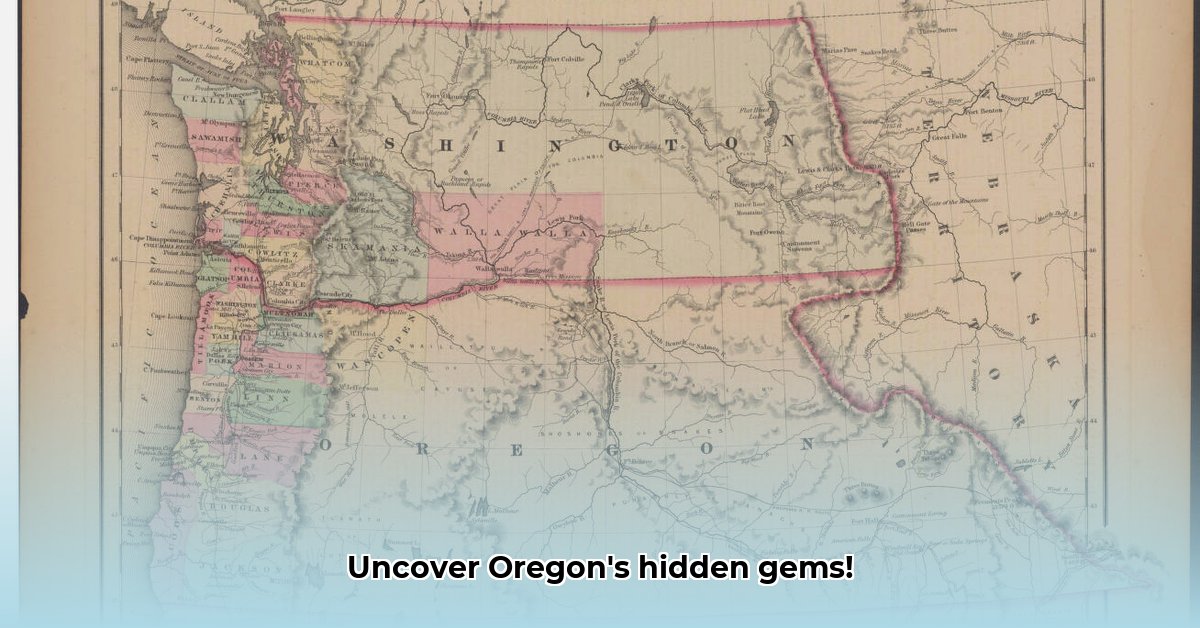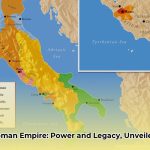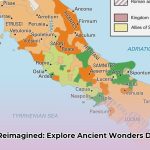Ever wondered what makes Oregon so unique? It’s more than just its quirky culture and amazing coffee. The state’s diverse geography plays a pivotal role in shaping its identity, economy, and the lives of its residents. For a broader look at regional impact, see this US regional map. Let’s explore the surprising connections between Oregon’s stunning landscapes and the bustling life it supports.
Oregon’s Diverse Regions: Unveiling the State’s Secrets and Regional Dynamics
Oregon evokes images of lush forests, dramatic coastlines, and snow-capped mountains. A closer look reveals a complex interplay of geography, population, and economy. This article explores this interwoven story, highlighting how the varying landscape influences where people live and how they make a living, and its vulnerability to climate change.
Oregon’s Geographic Tapestry: A Diverse Landscape
Imagine driving across Oregon and witnessing a dramatic change in scenery. From the Pacific Ocean’s crashing waves and towering cliffs, you transition into the Willamette Valley’s lush expanse of farms. As the land rises, the Cascade Mountains dominate the horizon with their volcanic peaks. Finally, you reach the high desert, a vast, open space stretching towards the horizon.
This geographically diverse landscape fundamentally shapes Oregon’s identity. The coastal region supports fishing, tourism, and cranberry farming, while the Willamette Valley serves as the agricultural heartland, known for its wine, hazelnuts, and berries. The Cascades act as a natural barrier, protecting the west from harsher climates and providing timber, hydroelectric power, and recreational opportunities. The high desert, with its unique ecosystem and dramatic geological formations like the Painted Hills, attracts visitors seeking vastness and stunning sunsets. Each region possesses a distinct character and economic driver, making Oregon a collection of diverse landscapes.
Population Patterns: Where Oregonians Call Home
Population density reveals a concentration of people in the Willamette Valley. Major cities like Portland, Salem, and Eugene attract residents with jobs, cultural amenities, and a comfortable lifestyle. The valley’s rich agricultural lands and moderate climate create an appealing environment for both urban and rural living.
In contrast, eastern Oregon has a significantly sparser population. Despite its breathtaking beauty, the region’s harsher climate, limited water resources, and vast distances lead fewer people to settle there permanently. However, it is home to ranchers, farmers, and those who appreciate the high desert’s unique beauty and wide-open spaces. The implications of this population disparity affect resource allocation, economic development, and political representation.
Economic Engines: Fueling Oregon’s Prosperity
Oregon’s economy is directly tied to its geography. The Willamette Valley’s fertile lands underpin the agricultural industry, supporting farms, wineries, and food processors. The timber industry, historically significant, still thrives in the Cascade Mountains, though its practices are increasingly scrutinized for sustainability. Eastern Oregon relies more on ranching, mining, and increasingly, renewable energy projects like wind and solar farms. Tourism flourishes statewide, drawn by Oregon’s stunning landscapes and outdoor recreation opportunities, contributing billions to the state’s economy annually. Sustainable tourism practices aim to balance economic benefits and environmental preservation, ensuring the state’s natural beauty remains intact for future generations.
Challenges and Opportunities: Navigating Oregon’s Future
Oregon’s geographical diversity presents unique challenges. Eastern Oregon faces difficulties in infrastructure development, economic diversification, and healthcare access because the region’s population density is lower than the Willamette Valley, which often results in services being spread thinly. Additionally, the ongoing debate over resource management, particularly regarding water rights and land use, creates tension between different regions and interest groups.
Climate change poses significant threats across the state, leading to altered rainfall patterns, increased wildfires, and environmental disruptions that jeopardize agriculture, forestry, and tourism. Coastal communities face rising sea levels and increased storm surges, threatening infrastructure and ecosystems. To effectively address these challenges, collaborative efforts between government, businesses, and communities are essential.
Actionable Insights: A Path Forward
Addressing climate change and regional disparities requires a collaborative approach. Here are key steps for a sustainable path forward:
- Enhance transportation infrastructure in eastern Oregon: Improve roads, rail lines, and broadband internet access to facilitate economic activity and connectivity.
- Develop robust climate change adaptation strategies: Implement policies to mitigate the impacts of climate change, such as water conservation, wildfire prevention, and coastal protection measures.
- Promote sustainable tourism practices: Focus on eco-friendly practices to minimize environmental impact while attracting visitors to all regions of the state. This includes promoting responsible recreation, supporting local businesses committed to sustainability, and investing in conservation efforts.
- Improve water management techniques for drought resilience: Implement efficient irrigation systems, water conservation measures, and explore alternative water sources to ensure agricultural sustainability and protect aquatic ecosystems.
- Invest in renewable energy infrastructure: Expand the use of solar, wind, and geothermal energy to reduce reliance on fossil fuels and create new economic opportunities.
Oregon’s incredible diversity presents both opportunities and hurdles. By understanding each region’s unique character and working together, Oregon can build a sustainable and prosperous future, preserving its natural beauty while ensuring economic growth and opportunity for all its residents.
Mitigating Climate Change Impacts on Oregon Agriculture
Oregon’s diverse geography greatly influences its agricultural practices and vulnerability to climate change, directly threatening the economic stability of those communities. Strategies should include investing in climate-resilient infrastructure, promoting sustainable farming practices, and developing climate-resilient crops. Oregon farmers can adapt to ensure food security amidst increasing environmental challenges through innovation, collaboration, and forward-thinking policies.
Oregon’s Geographic Tapestry: A Foundation for Agriculture
Oregon’s landscape is breathtakingly varied, ranging from the rugged Pacific Coast to the fertile Willamette Valley, the Cascade Mountains, and the high desert. This diversity shapes not only the types of crops grown but also the farming techniques. Each region’s unique features influence the vulnerability of its agricultural output to climate change.
The stark contrasts between these regions highlight the importance of regionally tailored mitigation strategies that address water scarcity, increased temperatures, and the threats to their livelihood.
Demographic Shifts and Agricultural Practices
Population distribution is tied to the land’s resources and opportunities, with most Oregonians living in the Willamette Valley. This concentration means the valley’s agricultural lands bear a disproportionate share of the pressure of population growth, leading to land-use conflicts and increased demand for resources.
Conversely, eastern Oregon faces challenges in economic diversification and maintaining viable agricultural operations. Rural economies are strongly connected to agricultural practices, making them particularly vulnerable to climate change impacts.
Economic Realities and Climate Change Vulnerability
Agriculture is the backbone of many Oregon communities, contributing significantly to the state’s economy. Increased temperatures, altered precipitation patterns, and more frequent extreme weather events impact crop yields and profitability for farmers. The increased frequency and intensity of wildfires impact air quality and agricultural productivity, posing additional challenges for farmers and ranchers in affected areas.
Strategies for a Sustainable Agricultural Future
Effectively addressing climate change impacts demands a multi-faceted approach:
- Investing in climate-resilient infrastructure: Supporting projects that improve water management, soil conservation, and energy efficiency.
- Promoting sustainable farming practices: Encouraging techniques like cover cropping, no-till farming, agroforestry, and integrated pest management.
- Developing climate-resilient crops: Investing in research and development of crop varieties adapted to changing conditions, such as drought-resistant wheat and heat-tolerant berries.
- Strengthening farmer support networks: Providing farmers with resources and education on climate-smart agriculture, including access to technical assistance, financial incentives, and peer-to-peer learning opportunities.
- Implementing carbon farming and market mechanisms: Incentivizing farmers for carbon capture and storage through practices like afforestation, conservation tillage, and the use of biochar.
The future of Oregon agriculture hinges on adapting to a changing climate while ensuring the long-term viability of this vital sector.
Sustainable Development in Oregon: Balancing Economy and Environment
Collaboration, data-driven decision-making, and adequate funding are essential for Oregon’s sustainability initiatives. Challenges remain in balancing economic viability with environmental sustainability, particularly regarding wildfire risk and economic diversification in eastern Oregon. Sustainable agriculture is a key element, enabling Oregon to balance its economic needs with its environmental responsibilities to ensure long-term prosperity.
Oregon’s Geographic Tapestry: A Foundation for Sustainability
Oregon’s stunningly diverse landscape influences the state’s economic and population patterns. The Willamette Valley supports intensive agriculture, while the Cascade Range shapes rainfall patterns and timber production. Eastern Oregon’s high desert presents sustainability challenges and opportunities, including renewable energy development and rangeland management.
Population Dynamics: Settlement Patterns and Sustainability
The Willamette Valley boasts the highest population concentration, while eastern Oregon remains less densely populated. Understanding these settlement patterns informs infrastructure development and equitable distribution of services, ensuring sustainable communities thrive in every region of Oregon.
Economic Engines: Agriculture, Technology, and Tourism
Oregon’s economy is rooted in its geography, with the Willamette Valley fueling its thriving agricultural sector and the Portland metro area driving its technology industry. Eastern Oregon relies more on resource extraction and is expanding renewable generation, while tourism is a significant economic driver statewide. Balancing economic growth with environmental stewardship is crucial for ensuring long-term sustainability.
Challenges and Opportunities: A Path Forward
Oregon faces significant challenges, including wildfires, water scarcity, and infrastructure needs. Collaboration between stakeholders, data collection, and innovative solutions are essential for sustainable development.
Conclusion
The intricate interplay of Oregon’s geography, demographics, and economy presents both challenges and extraordinary opportunities for sustainable development. Successfully navigating these complexities demands innovative strategies and a long-term vision.
Essential Climate Change Impacts on Oregon’s Future
Oregon’
















